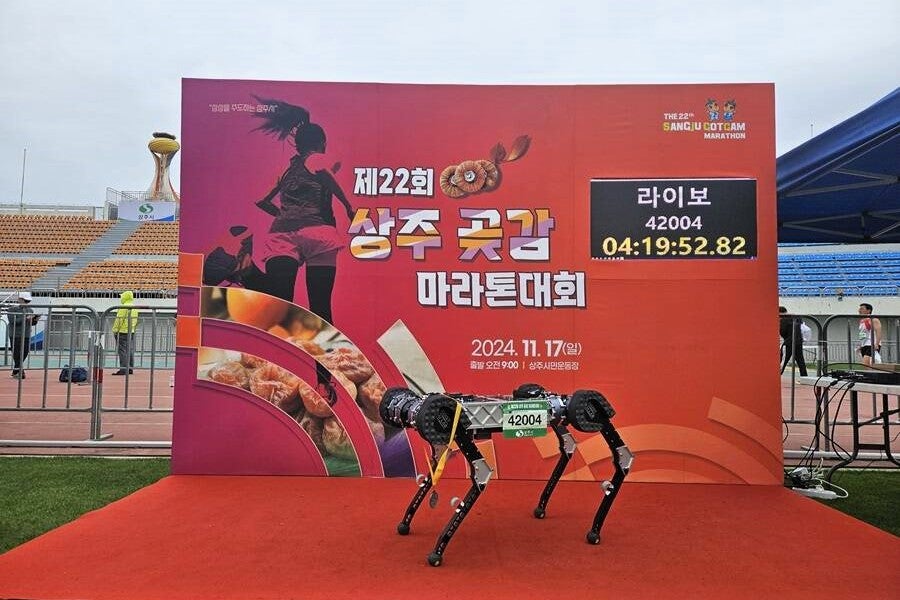Robot completes entire marathon without recharging battery in world first
RAIBO2 completes 42km course seven minutes faster than the average runner at last year’s London Marathon

A robot dog in Korea has become the first four-legged robot to complete a full-length marathon without needing to recharge its batteries.
The RAIBO2 robo dog completed the 42 kilometre (26 mile) course in a time of four hours and 20 minutes – seven minutes faster than the average mass-participation time at the London Marathon last year.
Built by engineers at Korea Advanced Institute of Science and Technology (KAIST), the robo dog used reinforcement learning algorithms to navigate the tough terrain of the Sangju Dried Persimmon Marathon, which includes two 50-metre elevation climbs.
The engineers were able to improve the walking efficiency and minimise energy loss of the quadrupedal bot, allowing it to complete the marathon on a single charge.
A special joint mechanism also allowed the RAIBO2 robot to harvest energy while going down slopes on the course.
“Through the marathon project, we demonstrated that RAIBO2 has the walking performance to stably execute services such as delivery and patrol in urban environments with many people and random objects,” said Choongin Lee, a PhD student at KAIST, who was involved in the development of RAIBO2.
“In follow-up research, we will add autonomous navigation functions to RAIBO and strive to achieve the world’s best walking performance in mountainous and disaster environments.”
Quadrupedal robots have become an increasingly popular way of performing dangerous jobs, such as patrolling security perimeters or surveying disaster zones.
Earlier this month, a robot dog built by US robotics firm Boston Dynamics was seen performing security duties at the Florida residence of US President-elect Donald Trump.
Capable of walking up and down stairs, opening doors and reaching places that humans are unable to access, the high-tech security robot plays an important role in “safeguarding the President-elect”, according to a spokesperson for the US Secret Service.
“While we cannot get into the specific capabilities, the robotic dogs are equipped with surveillance technology and an array of advanced sensors that support our protective operations,” the spokesperson added.
Elon Musk has also used the Boston Dynamics dogs to inspect the launch site of its Starship rocket following explosions at the firm’s Starbase facility in Texas, while the United States Army has commissioned the quadrupedal bots to perform various roles.
Join our commenting forum
Join thought-provoking conversations, follow other Independent readers and see their replies
Comments